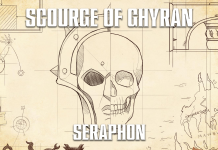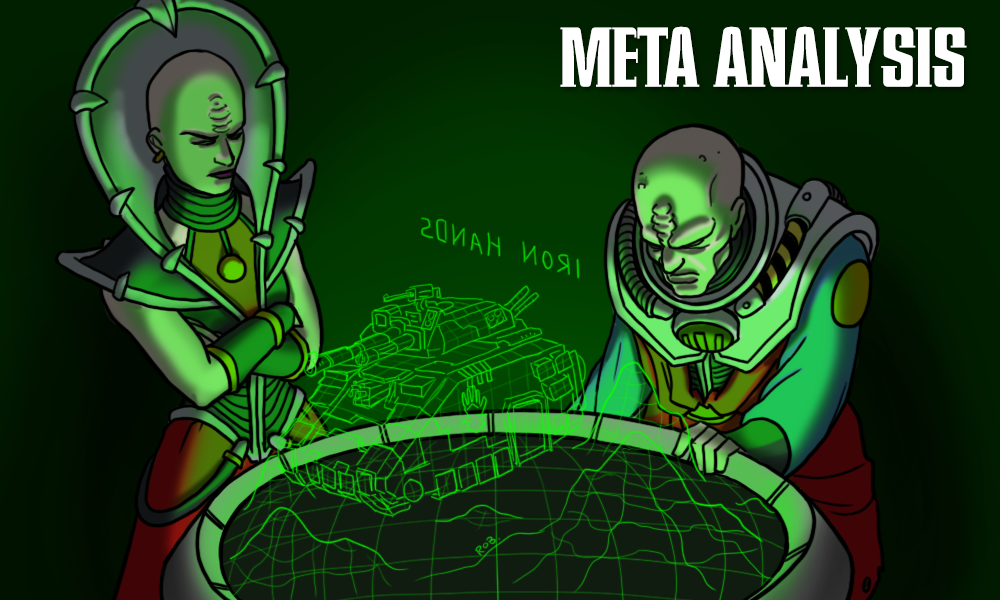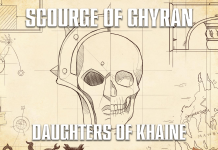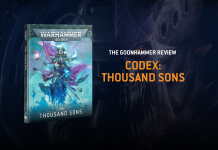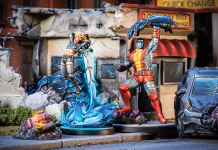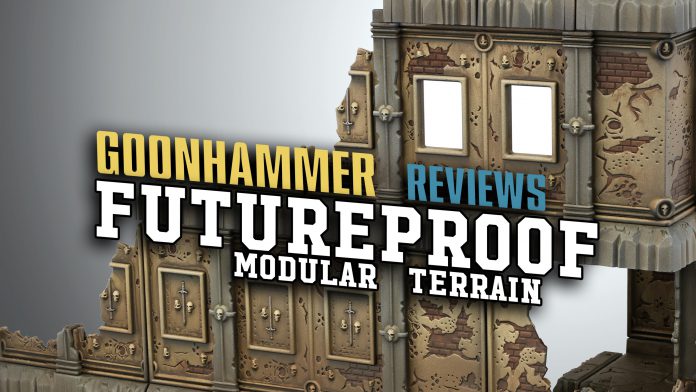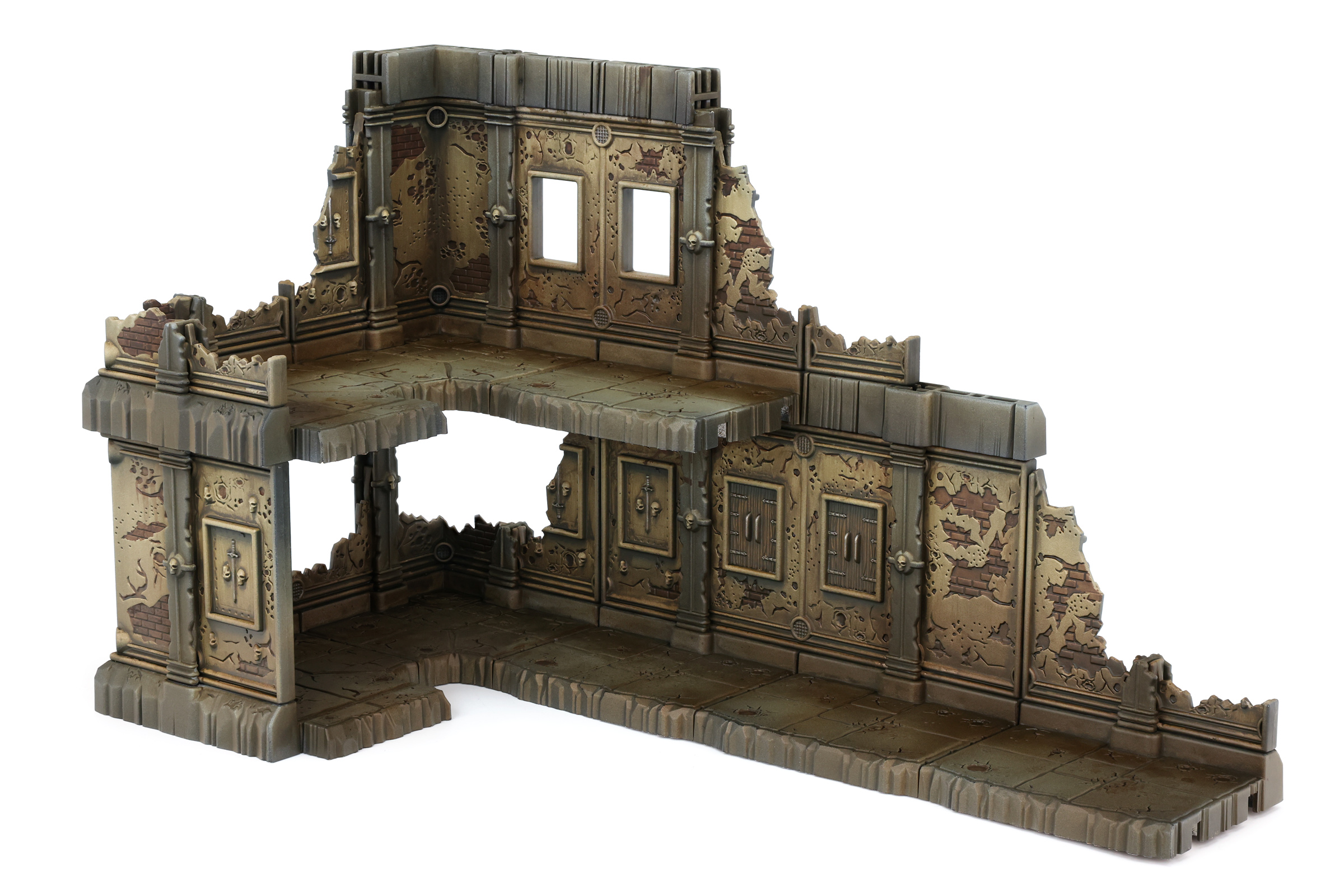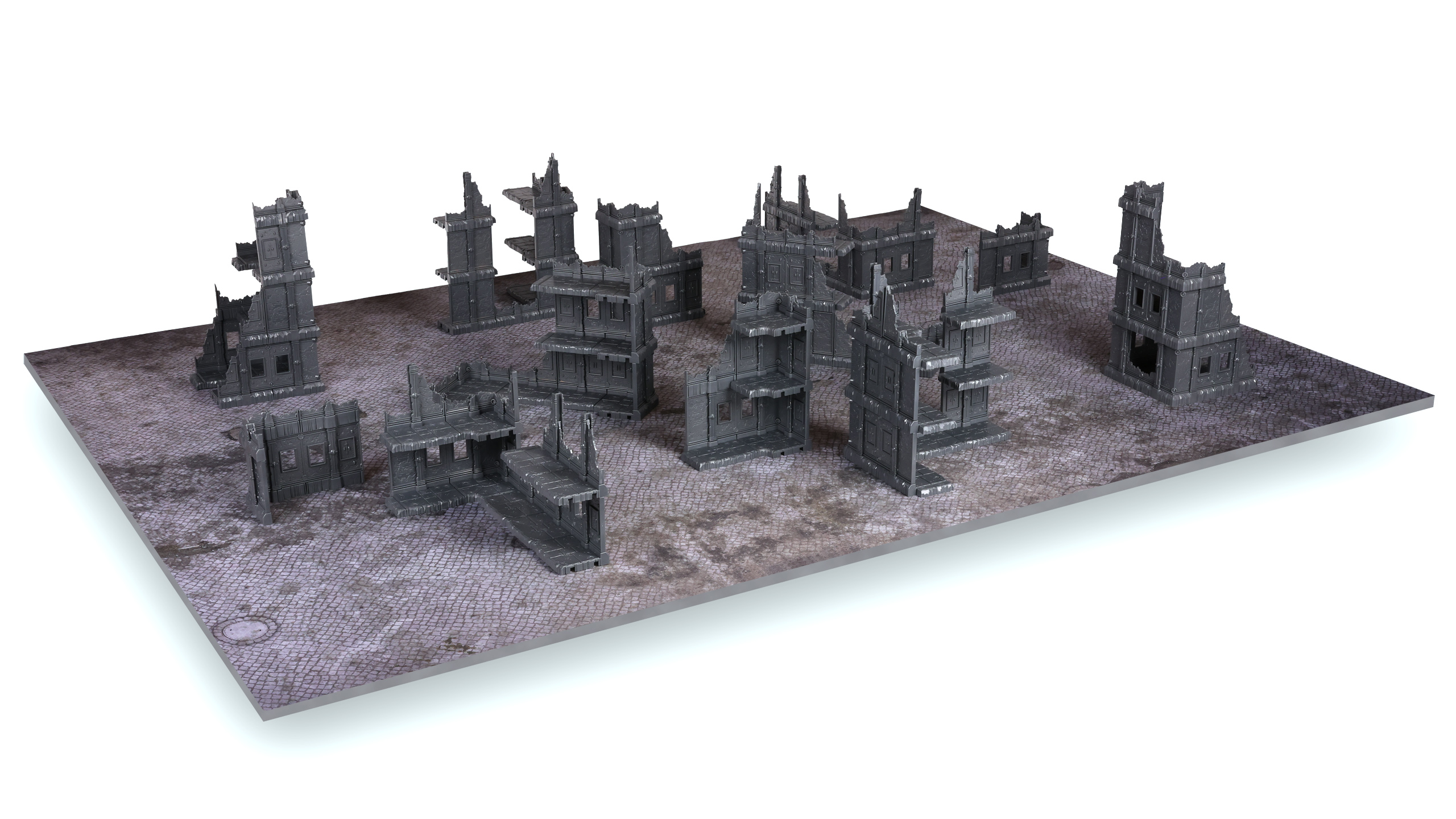All things lie somewhere on the RoboCop Scale. All the way from the highest highs of 1987’s cinematic masterpiece RoboCop, down to the lowest lows of 1993’s mistake-on-film of RoboCop 3. Something may be so good as to transcend description, yet still not reach the apex that is RoboCop. And other things may be vile beyond words, yet still not as disappointing as RoboCop 3.
It’s a scale that transcends medium, beyond cultures and people, to resonate with what it means to be alive. Plus using it as a framing device for this review of FutureProof Modular Terrain (Kickstarter now live) gives me an excuse to watch RoboCop blast Dick Jones out the window while Donald Johnson gives him a thumbs up.
Powerful.
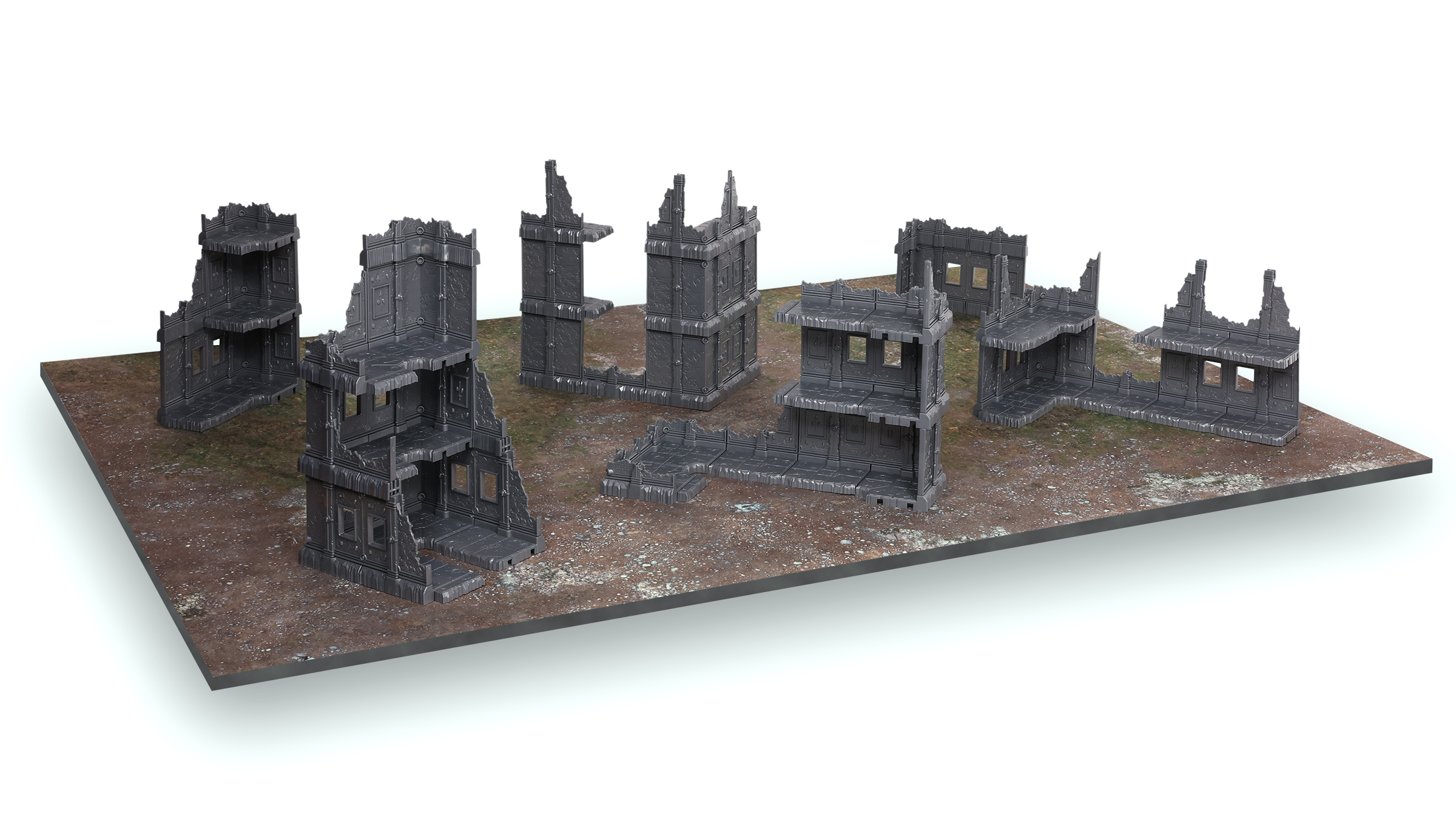
With that in mind, let’s look at wargaming terrain. Terrain makes the battlefield, literally and figuratively. The most impressive army of immaculately painted minis will look drab on a cardboard-box battlefield, and a battle-ready army of primary colors will shine on thematic and balanced terrain.
It’s also easy to overlook terrain when getting into Warhammer, or any tabletop game: learn the rules, pick a faction, plan your army, build, paint, work, work, work, and as an afterthought order some cheap MDF push-fit terrain. But I get it. After spending all that time and effort on the models, the idea of sinking just as much time into big elaborate plastic terrain kits can be exhausting.
That’s the space where FutureProof Modular Terrain aims to shake things up. It targets that sweet spot between “easy to build” and “looking good.” Not to mention boasting additional features like having a modular assembly, extensible design, low cost, being tournament compatible, and easy to store.

Each ruin you make with FutureProof terrain is some combination of the same base components. Like LEGOs, you simply push them together to build different structures. Snot Goblin Gaming has instructions on how to build them to meet Games Workshop tournament standards (which we refer to throughout this article using terms like “10E1” or “10E2” for different ruins). Or you can simply grab a handful of components, and start slapping them together.

FutureProof Terrain aims at a narrow target, and the big question is whether or not it hits that Goldilocks zone. Easy to build, but still looking good. Modular, but still durable. Neither too hot, nor too cold.
To get the answer, some of the best and brightest minds here at the Goonhammer Terrain Laboratories took a look at FutureProof Modular Terrain. We even one-upped the eponymous Goldilocks, as we didn’t break into any houses for this review, nor steal anyone’s supper. Patting ourselves on the back here, well done lads, we wrote a review and didn’t become felons in the process.
Thank goodness too, because RoboCop would totally punch through the wall behind me and throw me out a window if I was a felon. Truly a king’s death.
Thanks to Snot Goblin Gaming for providing us the terrain for this review. Check out their Kickstarter if you’re interested. This review represents our independent and honest opinions, warts and all. Additionally, the opinions on RoboCop are entirely my own, but they’re also objectively correct.
Pendulin
I dig it.
I was already a fan of Snot Goblin Gaming’s previous terrain, which we covered in our review back in August 2022. We had a fair amount of criticism of that terrain, but overall I still really liked it. This new terrain absolutely dunks on it, though. It’s not even close. Every area for improvement has been improved, and everything good about the old terrain has been made so much better.
If you liked the old terrain, I’ll love this one. If you hated the old terrain, then you’ll probably still like this one. It’s good stuff.
In a box of FutureProof Terrain, you’ll have a ton of different components: full walls, half walls, broken walls, columns, floors, etc. Though this is similar to the last version of Snot Goblin Gaming terrain, these new components blow the old ones out of the water.
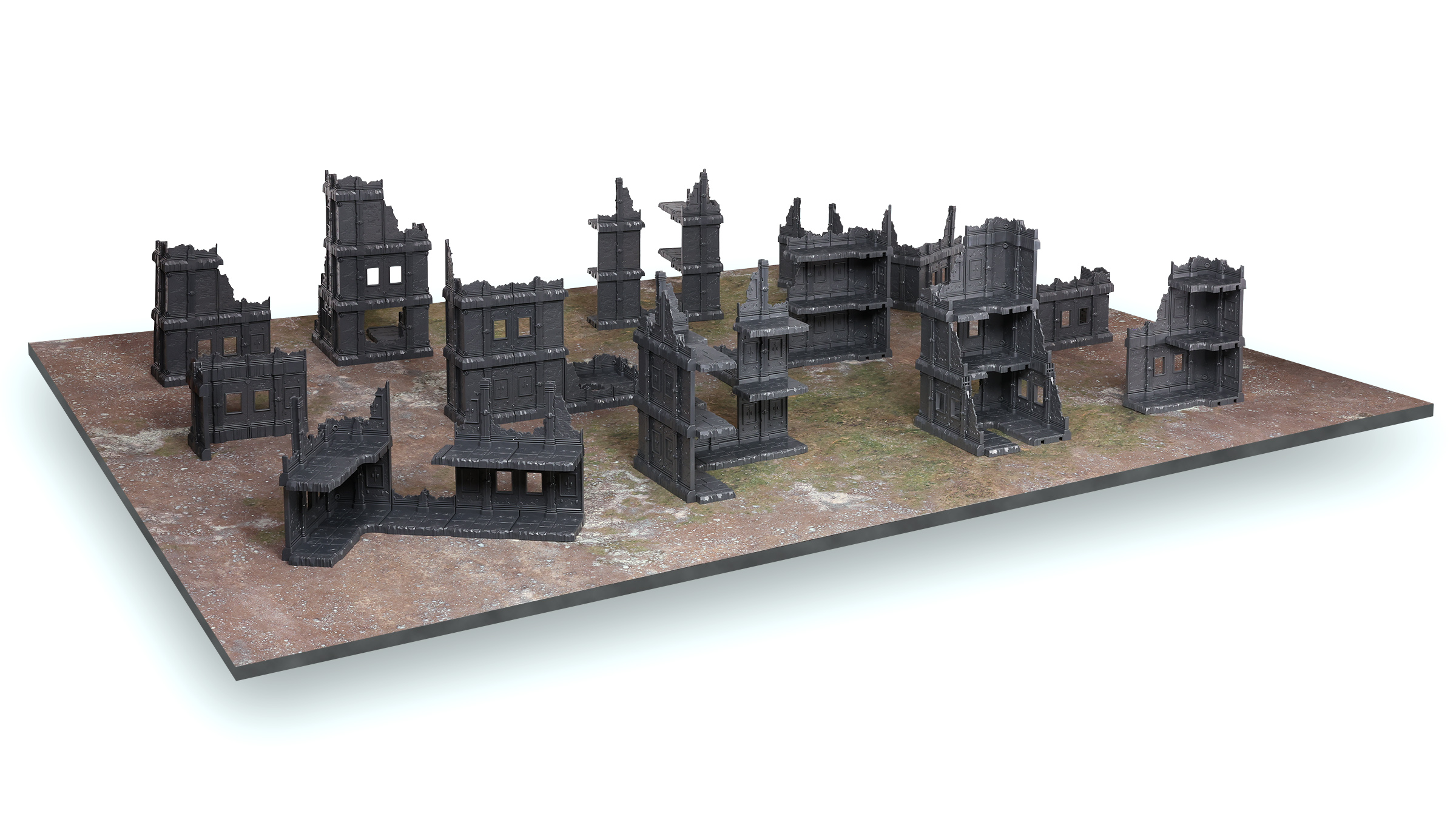 This terrain is surprisingly modular. Take a wall and flip it upside down, rotate it, or swap a full wall for two half-walls, leave gaps, add floors, go nuts. You can build ruins in a ton of different ways with this, and it’s more fun than I was expecting. When I opened the box, I was intent on following the recommended build instructions (more on that later), but I wound up ignoring them and building random ruins for like an hour.
This terrain is surprisingly modular. Take a wall and flip it upside down, rotate it, or swap a full wall for two half-walls, leave gaps, add floors, go nuts. You can build ruins in a ton of different ways with this, and it’s more fun than I was expecting. When I opened the box, I was intent on following the recommended build instructions (more on that later), but I wound up ignoring them and building random ruins for like an hour.
It’s not as modular as something like LEGOs, however. As cool as it would be, these don’t have a single universal connector for all components. You can’t, for example, use a wall tile in place of a floor tile, or directly connect walls without a supporting column or floor. The floors fit together with one type of connector, the walls another, and the columns a third.
That being said, these different connectors are each designed to meet different requirements. When you attach two floor tiles together, it’s a solid and strong connection that serves as the foundation for the whole ruin. Columns slot into the floors and act as the building’s rigid vertical framing. And walls slide into place between columns. As great as it would be to have a single universal connector, the system that Snot Goblin Gaming still gives you tons of creative freedom, produces durable buildings, and is simple enough that you can easily build massive ruins without instructions.

On the subject of instructions, I found them to be extremely straightforward. Snot Goblin Gaming has some videos on how to assemble the terrain to meet Games Workshop tournament layouts, and building the terrain to match those instructions was a breeze. Fast too. If you unbox FutureProof Terrain and start watching The Matrix, you’ll finish building a full table before There Is No Spoon. Whoa.
The only instruction I was less than enthusiastic about was 10E6, a small L-ruin without any flooring. As I mentioned above, the floor tiles are the backbone of the ruin, and because 10E6 doesn’t have any floors, the walls tend to separate quite easily. If you put some plastic or superglue between components, the whole ruin will be absolutely rock solid. As durable as any plastic terrain kit from Games Workshop or any other manufacturer. But if you leave this one particular ruin unglued, expect it to easily come apart with regular handling.
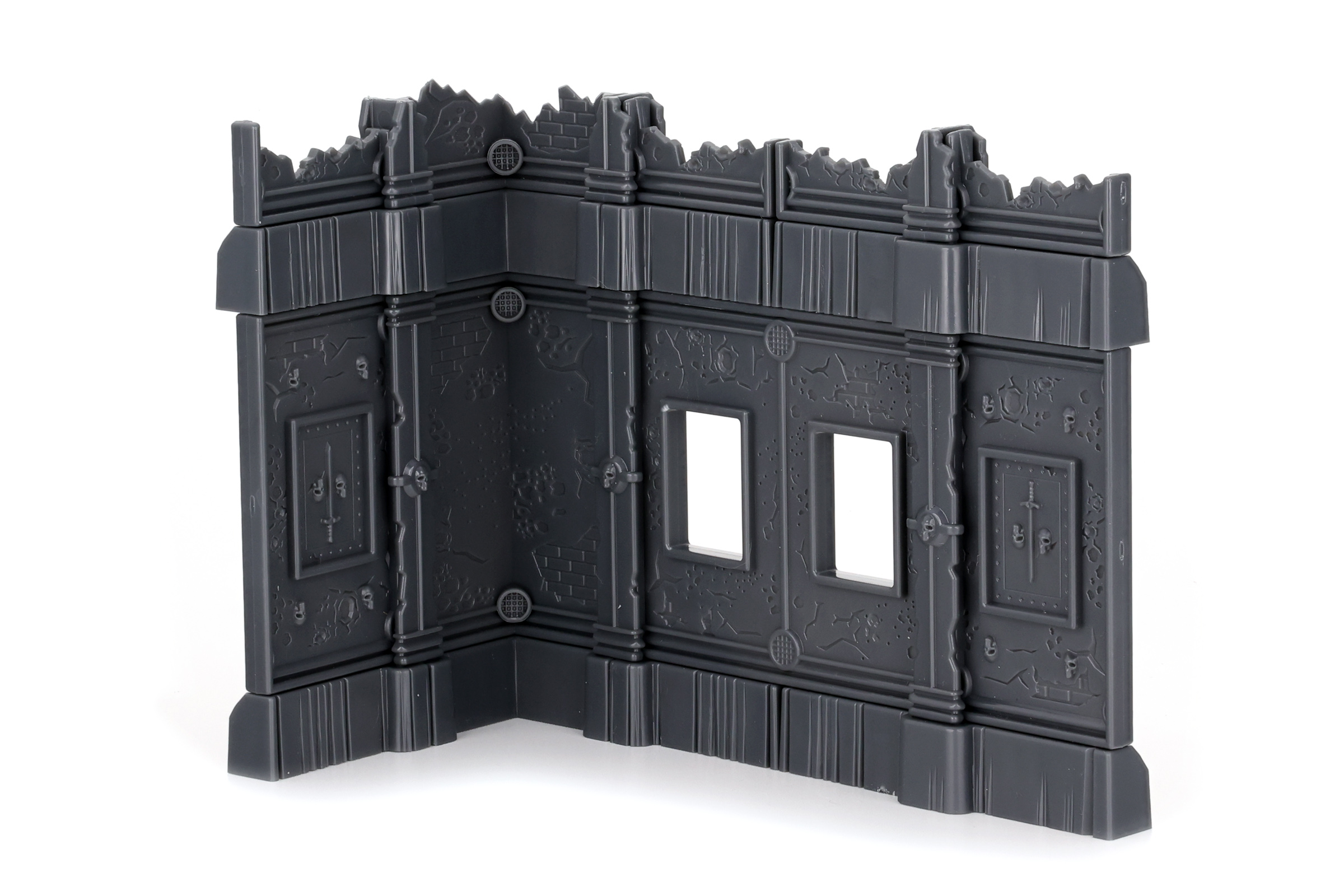
Durability was definitely a concern of mine, and was one of the biggest issues I had with the first version of Snot Goblin Gaming’s terrain. Fortunately, aside from ruins like 10E6 which lack flooring, these ruins are miles ahead of the 2022’s terrain. If you build a ruin with proper floors, columns, and walls, it’s solid. Easily durable enough to transport and play games on. And if you want next-level durability, you can use some plastic or superglue on the connectors. Sure, you lose out on the ability to reassemble the terrain, but once glued, it’s as durable as any other terrain I’ve ever played a game on. Possibly stronger, because the push-fit joints are really solid even without glue.
In terms of aesthetics, how does FutureProof shape up? Well, it’s got a stylized look that’s a bit more reserved than something like Games Workshop terrain. It may not have all the bits and bobs of a fancier kit, but the sculpted detail is enough to break up surfaces and keep things interesting. And if you hit it with some paint (look forward to an upcoming How To Paint Everything: FutureProof Terrain), it looks great.
Crab-stuffed Mushrooms
Wow, this is sturdy stuff! Clicking these together feels so satisfying. Normally my hands would be sore from assembling cheap MDF, but these are rock solid. One thing that surprised me: I didn’t need to file anything. Even GW’s sprue terrain requires a bit of filing. I don’t know if I have the patience to treat this terrain like LEGOs, but I love the concept.
One of the downsides to MDF is its brittleness compared to plastic. These feel built to last with a dollop of plastic glue. My only complaint is that this is almost too modular: I don’t want to spend too long assembling terrain, which is a gripe I have with some of GW’s kits.
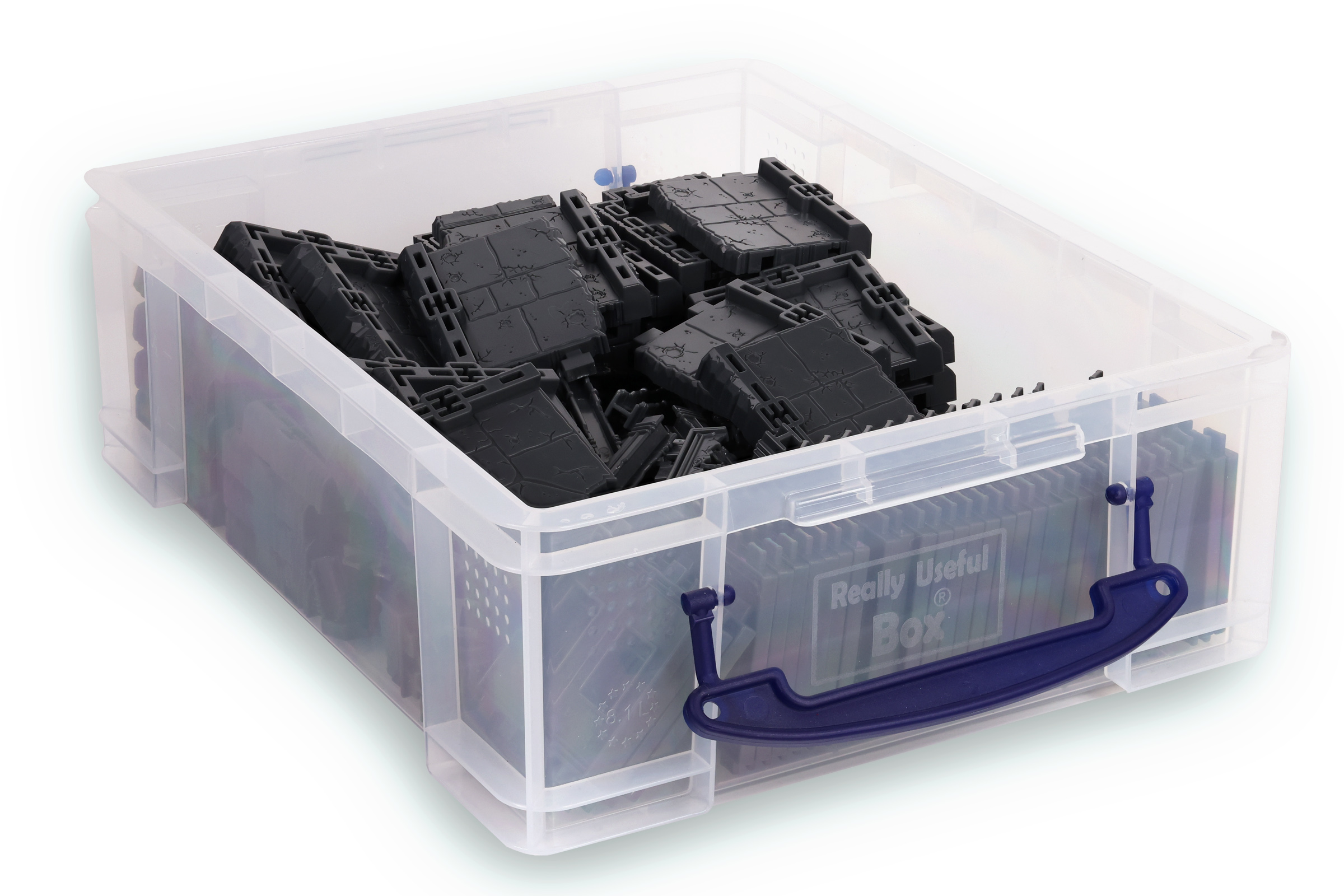
This could be the start of something great: the availability of official terrain from GW has been few and far between and often require glue or multiple disparate parts to assemble. By comparison, this stuff snaps together, with glue being optional if you want some variety to your layouts.
I’ll personally stick with the GW terrain for now, because I’m a shill and I enjoy the aesthetic, but I can see these being a boon for folks who want to get up and running quickly without worrying about MDF.
DYLON
As a noted terrain haver, can you imagine I have some thoughts about this? The first thing that struck me about it was the vibe. It reminds me of 90s board game art, think Heroquest or Battlemasters. I liken it to a caricature of a building. All the parts are there but they’re a little abstracted and exaggerated. It’s also interesting how the pieces are very flat. Like yeah, there’s detail, but there’s one depth to it and it’s simplified. You have the top surface and the flat indentation for the detail on it. Overall everything is very smooth with no surface detail or real depth variation. This isn’t a bad thing, it’s just the design style of this stuff and it may not be for everyone, but it’s miles ahead of MDF.

You can take the parts out of the box and put them together immediately. The mold lines and sprue points are mostly hidden, so clean up is almost nonexistent. I think someone could assemble and paint a full table in a weekend. And at the end, they’d have a great looking table to play on! And that’s awesome. It’s solid stuff too. You can dry-assemble a building and have it stay together with confidence. The way it interlocks makes for a very tough building and something that could live on a store table and survive years. There’s no fiddly parts to break and even the smallest part is robust. It’s very simple and it’s easy and fun to figure out how it all goes together.
While working with it I asked the question; who is FutureProof Terrain for? It could be for someone that doesn’t want to spend the time to assemble GW terrain or is newer to the hobby, but both want to have terrain for their home table. You get a table of this, either paint it as pieces and have a fun 30 minutes before a game building a bunch of ruins or build your ruins and paint them up. But what if you already have some terrain? Would it be worth getting a half-table of FutureProof Terrain to bulk your collection out? At Kickstarter launch prices I think so. But price aside, I would consider if you already have buildings or if the vibe of FutureProof fits in with your existing collections and if that’s the vibe you want.
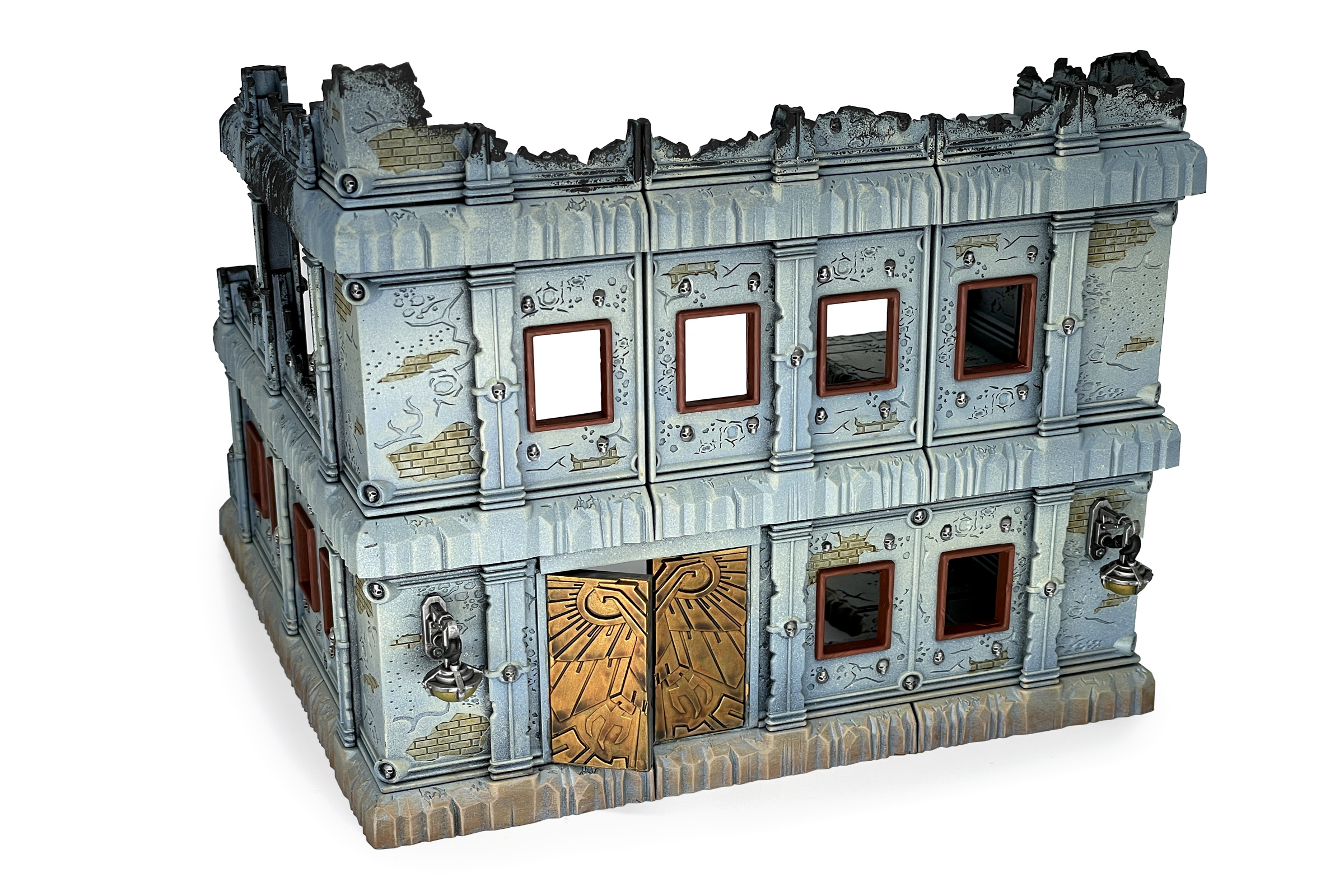
Is this for someone like me? I mean, no. I don’t think it’s the right fit for someone who hand-builds bespoke terrain all the time. But I’m also the guy who will take 2 years to make a single piece of terrain. So that’s not a fair comparison.
TL:DR It’s reasonably priced, super-sturdy terrain. Great for a modular table and a great option versus MDF. Details are kinda weird, but as a whole it ends up looking pretty good.
MasterSlowPoke
I’ve bought a lot of terrain over the years. Most of it gets assembled and forgotten about, as it doesn’t work as nicely as I thought it was, or it’s just not conducive to actually playing a game. I have a literal crate of aspirational Necromunda terrain that is just too complicated for a normal game of 40k.
FutureProof, by Snot Goblin Gaming, is a modular terrain system, and I’ve been disappointed by these in the past. They’re typically both too time consuming to build and not durable enough for real play. While it is cinematic for a building to crumble as you remove casualties from the Intercessor squad, it’s not practical or desirable.
I don’t have extensive experience with the FutureProof system, but after a few minutes learning it and building the recommended buildings, I timed myself for a tear down and rebuild. It only took me 78 seconds to break building 10E2 down into its components and sort them for storage. This is far faster than any other modular terrain I’ve used. Rebuilding it back into the 10E2 configuration only took me 139s, and this was only the second time I ever built that structure. Again, this is incredible for modular terrain. The system is a breeze to use, all of the pieces fit together easily, with no death grip needed when you are trying to pry them back apart.
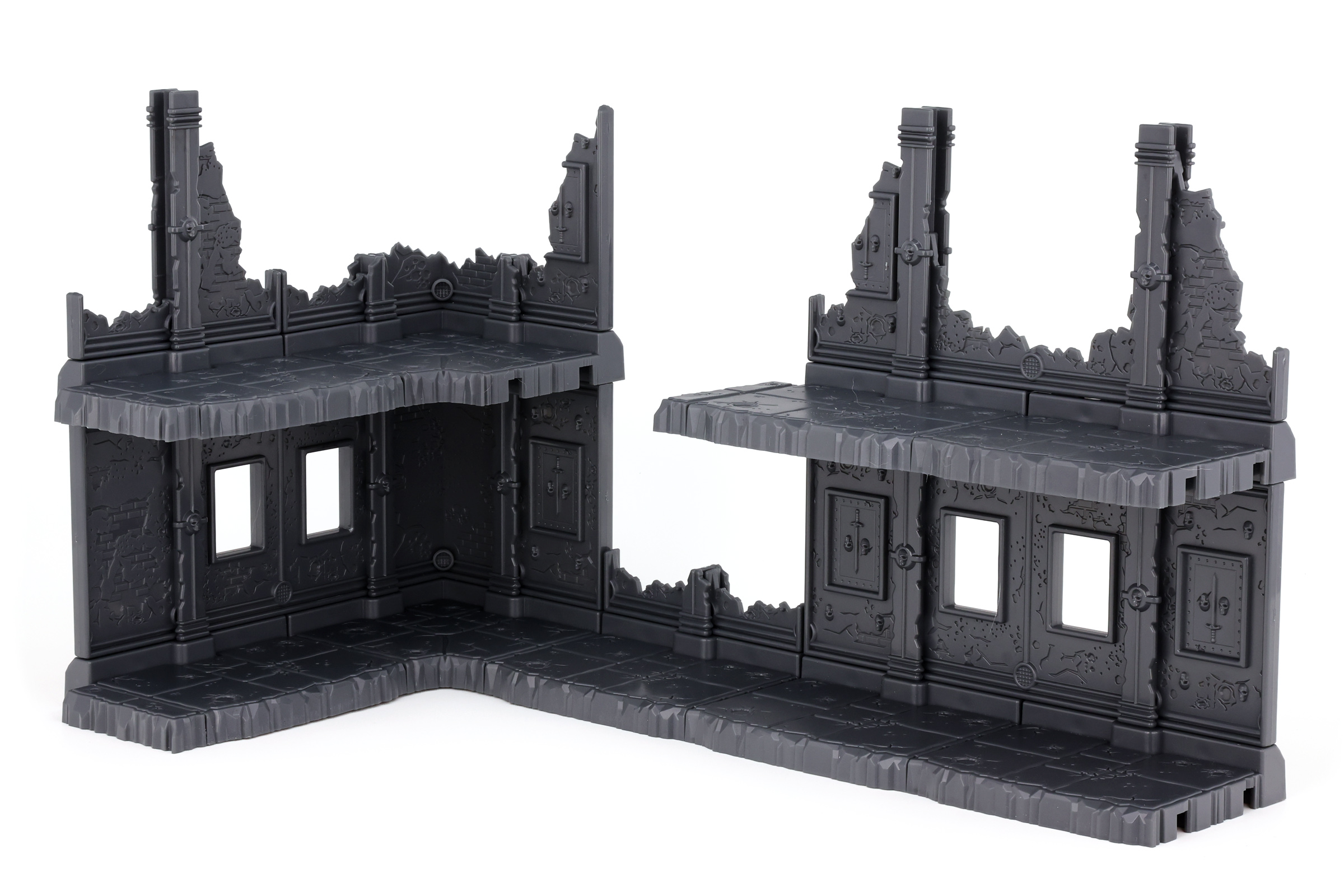
Modularity is where I feel FutureProof comes a lot little short. While all of the like pieces are pretty interchangeable, you don’t exactly get a lot of variety. Each type of piece is identical to all others of that type. It is a bit of a minor quibble, and I think that increasing the variety linearly increases the production costs, but it results in the building’s all looking a bit samey. You also surprisingly don’t have too much variety in the ways you can build the terrain as supplied. Many of the recommended builds have a strange large gap in the walls, like 10E2 and 3, where the system just does not have the pieces for a proper blown out wall. I tried rebuilding the 10E2 building with a third story, and it couldn’t figure out a combination where it didn’t have some unsightly exposed connectors (spot it on the building I’m posting below). If you want get creative, you’re going to have to cannibalize other buildings for spare parts.
The terrain does score very high on the playablity scale. The floor tiles are wide enough to balance 60mm bases easily, and the floors are not so wide you can’t easily put models on the lower floors. There are a lot of gaps and windows however, so you will want to come up with a standard on how LOS is blocked before you start playing.

In comparison with Mantic Game’s modular terrain systems, Snot Goblin certainly wins the buildability war. You can build an entire structure before you’d get two Mantic tiles securely fastened together. The FutureProof terrain also wins a bit on looks – the connectors on them actually look like building parts out of context, while Mantic’s leave a lot of raw connection ports open, making a battlefield kind of look like a paintball arena. As a more mature system Mantic definitely wins on variety – you can build their terrain an infinite number of ways with a wide selection of pieces, while you’re only going to be able to build the same kinds of ruined buildings with FutureProof.

Against the tournament standard MDF terrain, there is no comparison – FutureProof looks way better. I love Big Square, found on Death Ray Design’s 123GT set, more than most, but Snot Goblin’s offering is far more aesthetically pleasing. This beauty comes at a price though – both financially and time. When you’re trying to fill out 50 tables at a GT, you don’t have time to futz around even with FutureProof’s excellent connectors, and a TO’s budget is always not as big as hoped. I could see a tournament having a few tables of this terrain for streams, though, as it looks a lot more engaging than MDF. MDF sets also have a point up on variety, surprisingly enough – the future proof system doesn’t really support the low walls found on 10th edition tables. You could try to build something out of the floorless connectors, but I think it’d mostly just fall down.

It is pretty difficult to beat GW on detail and variety when it comes to plastics. However, Snot Goblin certainly has an easy victory when it comes to price and availability. A full set of FutureProof will cost about the same as two GW buildings, if you can even find them for sale anywhere.
Conclusion
There’s a lot to love about FutureProof terrain. Assembly is a breeze, the buildings are plenty durable, and they’ve got a great stylized look to them that’s fun to paint (keep an eye out for our upcoming article, How To Paint Everything: FutureProof Terrain). Though it’s not without flaws. Each “full width wall” is the same piece of plastic as all the other “full width walls”, which means you have to be a little careful when assembling to avoid repetition. However, FutureProof gives you a lot of wiggle room for that: you can flip walls upside-down, backwards and forwards, or swap them out entirely for half-broken walls, window walls, or several other varieties.
Is it the silver bullet of all terrain? Not quite. When I think “silver bullet,” only one thing comes to mind, and that’s RoboCop. And speaking of, where does FutureProof Modular Terrain land on the RoboCop Scale, from a perfect 1 to a disappointing 3?
I’d place it around a 1.3 to 1.4. It’s not the perfect terrain for every gamer on the planet, but regardless of your tastes, there’s almost certainly something about it that will appeal to you. Whether it be affordability, availability, accessibility, aesthetics, or alliteration, this terrain’s got a lot going for it.

If you’re interested, you can pick up a single ruin, half table, or a full table for yourself on their Kickstarter. And if you do, leave a comment on their Kickstarter telling them that RoboCop sent you. Not for any practical purposes, but because I think it’d be funny to mess with them, and it would confuse some people. And isn’t that really why we’re all here? That, and to watch Dick Jones plunge a hundred stories after being blasted by RoboCop.
God bless us. Every RoboCop of us.

